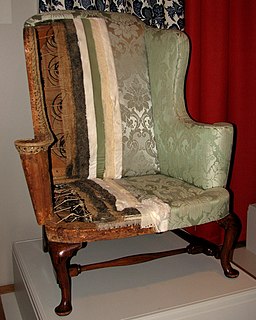 W
WUpholstery is the work of providing furniture, especially seats, with padding, springs, webbing, and fabric or leather covers. The word upholstery comes from the Middle English word upholder, which referred to an artisan who makes fabric furnishings. The term is equally applicable to domestic, automobile, airplane and boat furniture, and can be applied to mattresses, particularly the upper layers, though these often differ significantly in design. A person who works with upholstery is called an upholsterer. An apprentice upholsterer is sometimes called an outsider or trimmer. Traditional upholstery uses materials like coil springs (post-1850), animal hair, coir, straw and hay, hessians, linen scrims, wadding, etc., and is done by hand, building each layer up. In contrast, today's upholsterers employ synthetic materials like dacron and vinyl, serpentine springs, and so on.
 W
WAn antimacassar is a small cloth placed over the backs or arms of chairs, or the head or cushions of a sofa, to prevent soiling of the permanent fabric underneath. The name also refers to the cloth flap 'collar' on a sailor's shirt or top, used to keep macassar oil off the uniform.
 W
WA box-spring is a type of bed base typically consisting of a sturdy wooden frame covered in cloth and containing springs. Usually the box-spring is placed on top of a wooden or metal bedframe that sits on the floor and acts as a brace, except in the UK where the divan is more often fitted with small casters. The box-spring is usually the same size as the much softer mattress that is placed on it. Working together, the box-spring and mattress make up a bed. It is common to find a box-spring and mattress being used together without the support of a frame underneath, the box spring being mounted directly on casters standing on the floor.
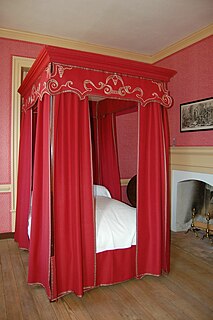 W
WA canopy bed is a decorative bed somewhat similar to a four-poster bed. A typical canopy bed usually features posts at each of the four corners extending four feet high or more above the mattress. Ornate or decorative fabric is often draped across the upper space between the posts and a solid swath of cloth may create a ceiling, or canopy directly over the bed.
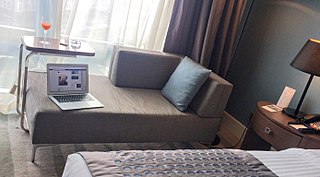 W
WA chaise longue is an upholstered sofa in the shape of a chair that is long enough to support the legs.
 W
WA couch, also known as a sofa, settee, futon, or chesterfield, is a piece of furniture for seating two or three people. It is commonly found in the form of a bench, with upholstered armrests, and often fitted with springs and tailored cushions. Although a couch is used primarily for seating, it may be used for sleeping. In homes, couches are normally put in the family room, living room, den or lounge. They are sometimes also found in non-residential settings such as hotels, lobbies of commercial offices, waiting rooms, and bars.
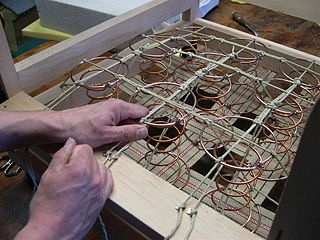 W
WIn furniture-making, the upholstery frame of a piece of furniture gives the structural support and determines the basic shape of the upholstered furniture. The frame may be a basic piece of wooden furniture prior to its being upholstered. Like a finished piece of furniture prior to the upholstering, the frame establishes the final quality, including its durability, and sets limits upon the final design, padding, cushioning, or cover.
 W
WThe Klippan sofa is a popular model of sofa manufactured and sold by IKEA. Klippan means "the Cliff" in Swedish.. It was first sold in 1979 and celebrated its 30th birthday in 2009 and continues to be one of IKEA's most popular and longstanding products. It comes in a standard two-seat size, and can be fitted with a range of removable and interchangeable fabric covers. As well as standard cotton covers, IKEA sells 'exclusive' collections of covers, retiring designs after a year.
 W
WAn ottoman is a piece of furniture. Generally ottomans have neither backs nor arms. They may be an upholstered low couch or a smaller cushioned seat used as a table, stool or footstool, the seat may have hinges and form a lid whereby the inside hollow used for storage of linen, magazines or other items. The smaller version is usually placed near to an armchair or sofa as part of living room decor or may be used as a fireside seat.
 W
WA palliasse or tick is a large bag made of strong, stiff material such as canvas, linen or sackcloth. This is then filled with material such as straw, horsehair, wool or feathers to make a mattress.
 W
WPantasote is an imitation leather material made by the Pantasote Company, beginning in 1891. It was a durable, relatively inexpensive material used as upholstery and for tents and awnings.
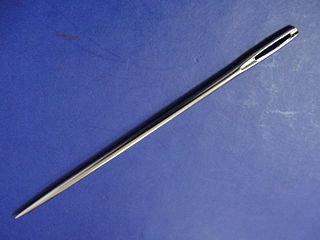 W
WA sewing needle, used for hand-sewing, is a long slender tool with a pointed tip at one end and a hole at the other. The earliest needles were made of bone or wood; modern needles are manufactured from high carbon steel wire and are nickel- or 18K gold-plated for corrosion resistance. High quality embroidery needles are plated with two-thirds platinum and one-third titanium alloy. Traditionally, needles have been kept in needle books or needlecases which have become objects of adornment. Sewing needles may also be kept in an étui, a small box that held needles and other items such as scissors, pencils and tweezers.
 W
WA slipcover is a fitted protective cover that may be slipped off and on a piece of upholstered furniture. Slipcovers are usually made of cloth. Slipcovers slip on and off, they come fresh, and may be removed for seasonal change, cleaning, moving, or storage.
 W
WA throw pillow, or toss pillow, is a small, decorative soft furnishing item made from a wide range of textiles including cotton, linen, silk, leather, microfibre, suede, chenille, and velvet. Throw pillows are a commonly used piece in interior design and come in a wide variety of shapes, sizes and decorative elements such as tassels and piped edges. The most common throw pillow designs are square and range from 16 inches to 24 inches. In the UK, a throw pillow is more commonly referred to as a scatter cushion.
 W
WAn upholstery hammer is a lightweight hammer used for securing upholstery fabric to furniture frames using tacks or small nails.
 W
WA sewing needle, used for hand-sewing, is a long slender tool with a pointed tip at one end and a hole at the other. The earliest needles were made of bone or wood; modern needles are manufactured from high carbon steel wire and are nickel- or 18K gold-plated for corrosion resistance. High quality embroidery needles are plated with two-thirds platinum and one-third titanium alloy. Traditionally, needles have been kept in needle books or needlecases which have become objects of adornment. Sewing needles may also be kept in an étui, a small box that held needles and other items such as scissors, pencils and tweezers.
 W
WAn upholstery regulator is an upholstery tool which smooths irregularities in the stuffing beneath the coverings.
 W
WTurkeywork is a knotted-and-cut pile furnishing textile produced in England from the sixteenth to the mid-eighteenth centuries. Turkeywork was used for table carpets, cupboard carpets, cushions, and especially for matched sets of upholstery for chair seats and backs.
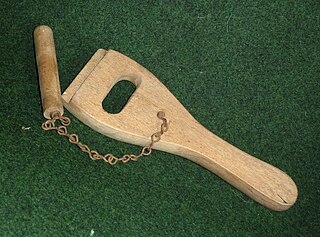 W
WA webbing stretcher is an upholstery tool used to stretch webbing.
 W
WA wing chair is an easy chair or club chair with "wings" attached to the back of the chair, typically, but not always, stretching down to the arm rest. The purpose of the "wings" was to shield the occupant of the chair from drafts, and to trap the heat from a fireplace in the area where the person would be sitting. Hence, in the past these were often used near a fireplace. Currently, most examples of wing chairs are fully upholstered with exposed wood legs, but many of the oldest examples of wing chairs have an exposed frame with padded cushions at the seat, arm rests, back and sometimes wings.
 W
WThe Woolsack is the seat of the Lord Speaker in the House of Lords, the Upper House of the Parliament of the United Kingdom. Before 2006, it was the seat of the Lord Chancellor.